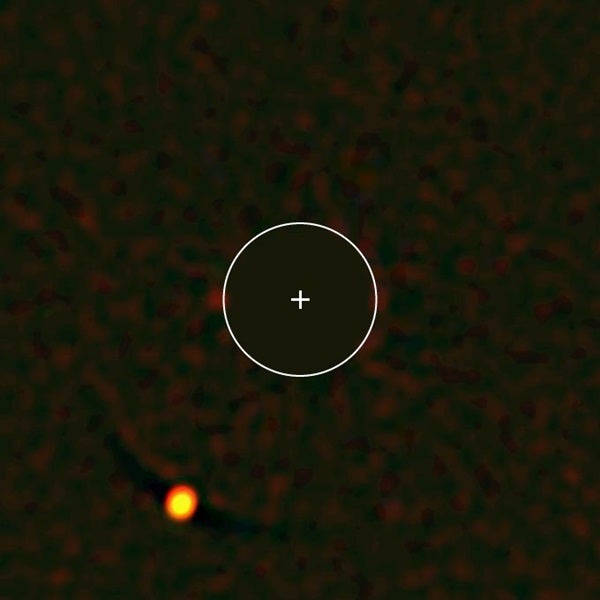Many planets seem to “challenge formation mechanisms” of planets altogether, at least according to the press releases. But this much is true: nothing we’ve seen thus far is much like HIP 65426.
Max Planck Institute for Astronomy researchers directly imaged the planet using the Spectro-Polarimetric High-contrast Exoplanet REsearch (SPHERE) instrument, which blots out light from the home star to draw out reflected light from the planet. This is the first object discovered by the instrument, and is currently the only planet discovered in the system. The work has been accepted for publication in Astronomy & Astrophysics.
The planet is still warm from its formation, with an estimated temperature of 2,400 degrees Fahrenheit (1,300 Celsius). It’s between 6 and 12 Jupiter masses, which would place it firmly in the planetary range (rather than a brown dwarf, or “failed star”).
Most gas giants don’t have an orbit that far out unless their orbit has been disrupted — which, indeed, is one of the scenarios researchers are exploring for its formation. In this scenario, the planet formed close in, while the orbit of another forming planet in the system became destabilized. That planet fell in toward the star, shooting HIP 65426b outward to 100 AU. The other possibility researchers are exploring is that the star and the planet formed at the same time, which is thus far unheard of.
Either way, this system still has a lot of explaining to do for how it got this way.










